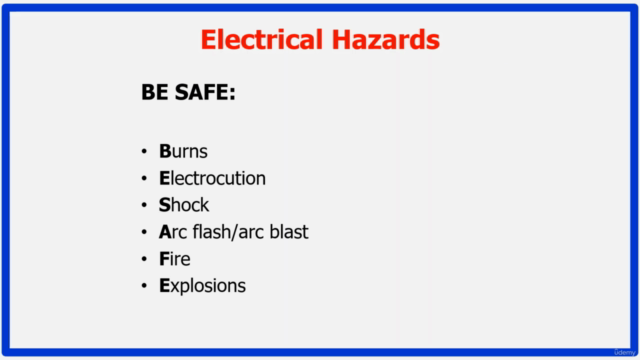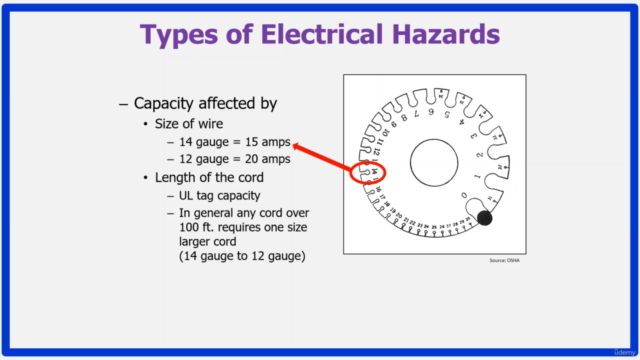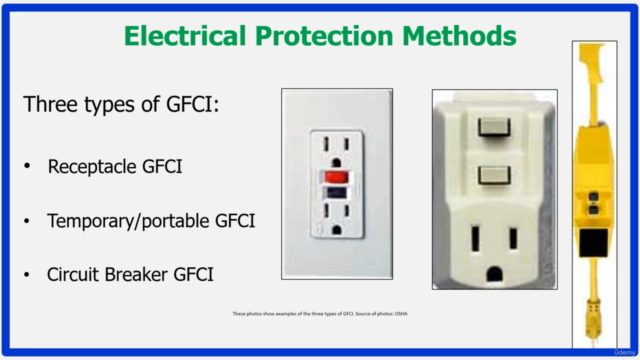Electrical Hazards in Hindi

Why take this course?
Course Title: Electrical Hazards & Its Control at Workplaces
Headline: Stay Safe Around Electricity – Master Electrical Hazards with Expert Pravin Pathak!
Introduction: Electricity is a powerful force that powers our lives and workplaces. It's crucial to understand the basics of electrical safety to prevent accidents and injuries. Conductors, like metals, carry electricity efficiently, while insulators, such as dry wood or rubber, resist it. Grounding serves as a protective measure by providing a conductive path to the earth, ensuring that any fault currents are safely directed away from personnel and equipment.
BE SAFE: Remember the acronym BE SAFE to keep electrical hazards at bay:
- Burns
- Electrocution
- Shock
- Arc flash/arc blast
- Fire
- Explosions
Hazards of Electrical Energy: Electric current can have profound effects on the human body. A mere 0.001 amps (1 milliampere) can cause a noticeable tingle, while a current as low as 0.01 amps (10 milliamperes) can trigger muscle contractions. At 0.1 amps (100 milliamperes), the effects become more serious and potentially lethal. It's essential to understand how electric current interacts with our bodies and the potential hazards it poses.
Electrical Protection Methods: To safeguard against electrical hazards, follow these key practices:
- Always maintain a safe distance from overhead power lines.
- Understand the clearance distances required for different voltage lines to prevent accidents.
Earthing Standard: Earthing (or grounding) is vital for electrical safety. It provides a low impedance path for fault currents, ensuring that any errors in the system are quickly isolated. The Indian Standard IS:3043 and the National Electrical Code (NEC) outline detailed guidelines for earthing practices to ensure the safety of persons, property, and animals.
Classification of Hazardous Areas: Workplaces where flammable gases or vapors are present in the air can be classified into three zones:
- Zone 0: Continuously hazardous atmosphere; any spark could lead to fire or explosion.
- Zone 1: Likely to contain a hazardous atmosphere; stringent safety measures are required.
- Zone 2: Potentially hazardous only under abnormal conditions; measures are in place to prevent ignition sources.
Course Highlights:
- Learn the fundamentals of electrical safety and how to apply them effectively.
- Understand the impact of electric current on the human body and recognize the signs of electrical hazards.
- Master the standards for earthing (grounding) and their practical application in maintaining a safe workplace.
- Get to grips with the classification of hazardous areas and how to implement appropriate safety measures.
Why Take This Course? 🌟
- Expert Guidance: Learn from Pravin Pathak, an expert in electrical safety.
- Comprehensive Coverage: Get a thorough understanding of the risks and control measures associated with electrical hazards at workplaces.
- Real-World Application: Apply your knowledge to real-life scenarios for effective and immediate impact on safety.
- Certification: Upon completion, receive a certificate that showcases your commitment to workplace safety and your expertise in managing electrical hazards.
Enroll now to electrify your knowledge of workplace safety and ensure you're well-versed in the best practices for handling electrical hazards! ⚡📚✨
Course Gallery




Loading charts...